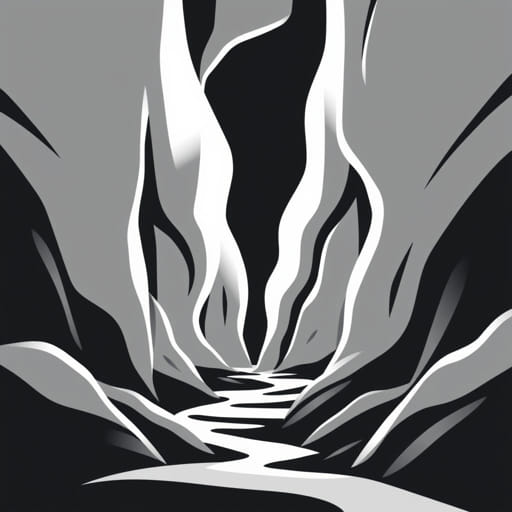In the rich tapestry of English literature, few phrases evoke as much mystery and grandeur as caverns measureless to man. Originating from Samuel Taylor Coleridge’s visionary poem Kubla Khan, this phrase captures the imagination with its sense of endless depth and untamed nature. It paints an image of a world beyond comprehension, one that exists in both physical and symbolic dimensions. When we explore the concept of borrowing or entering these caverns literal or metaphorical we step into a realm where the boundaries of human understanding and creativity are stretched.
Origins of the Phrase
Coleridge’s Vision in Kubla Khan
The phrase caverns measureless to man is part of a dreamlike poem written in 1797 by Samuel Taylor Coleridge, reportedly under the influence of laudanum. In this poem, Coleridge describes the construction of a stately pleasure dome in Xanadu, which features a sacred river flowing through caverns beyond human measurement.
These lines capture a surreal landscape:
In Xanadu did Kubla Khan / A stately pleasure-dome decree: / Where Alph, the sacred river, ran / Through caverns measureless to man / Down to a sunless sea.
Coleridge’s language suggests a mythical or spiritual journey into unknown territory places where light and reason do not reach, and where the human soul encounters the sublime.
Literal Interpretations: Exploring Real Caverns
Geological Wonders That Defy Measurement
While Coleridge’s poem is rooted in imagination, the natural world offers real examples of caverns that feel nearly immeasurable. Vast cave systems like Mammoth Cave in the United States or Son Doong Cave in Vietnam extend for miles underground, featuring chambers so large they have their own ecosystems.
- Mammoth Cave: The longest known cave system in the world, with over 400 miles of surveyed passageways.
- Son Doong Cave: Discovered in 2009, this Vietnamese cave contains a river, jungle, and even clouds inside its massive chambers.
- Krubera Cave: Located in the country of Georgia, it is one of the deepest known caves, plunging over 7,000 feet below ground.
These caverns, while scientifically measurable, still evoke a sense of wonder and danger. Their vastness reminds us of the Earth’s ancient history and the many mysteries still hidden beneath the surface.
Caverns as Adventure Destinations
Cave exploration, or spelunking, has become a popular activity for adventurers and scientists alike. These journeys test human limits, both physically and mentally. Inside such caves, explorers confront darkness, disorientation, and sometimes claustrophobia conditions that mirror Coleridge’s imagery of sunless seas and immeasurable depths.
Metaphorical Meaning of Measureless Caverns
Symbol of the Unconscious Mind
Many literary critics interpret the caverns measureless to man as symbolic of the unconscious mind. Just as caverns are hidden beneath the earth’s surface, the human unconscious contains thoughts, memories, and desires that are often buried deep within. Psychologists like Carl Jung and Sigmund Freud explored these mental caves, revealing how they influence behavior and creativity.
The Creative Process as a Descent
For writers, artists, and musicians, tapping into the measureless can represent the creative process itself. Great art often comes from exploring personal or collective depths spaces that are difficult to articulate but deeply felt. In this sense, to borrow caverns measureless to man is to draw from the infinite well of human emotion, dream, and myth.
Philosophical and Spiritual Interpretations
In spiritual terms, these caverns might represent the unknown aspects of the divine or the soul’s journey into the mysteries of existence. Ancient traditions often viewed caves as sacred places sites of birth, death, and transformation. Entering them symbolized initiation into deeper truths or hidden knowledge.
Using the Phrase in Modern Contexts
Literature and Poetry
Writers continue to draw on the imagery of caverns measureless to man to evoke a sense of mystery and depth. The phrase can serve as a powerful metaphor in modern poetry, science fiction, fantasy, or psychological thrillers.
Visual Art and Film
In visual storytelling, the concept of measureless caverns appears in films, video games, and art installations. Whether it’s the Mines of Moria inThe Lord of the Ringsor the dreamscapes of Christopher Nolan’sInception, creators use this archetype to represent the unknown, often dangerous, yet transformative space.
Philosophy and Modern Thought
Contemporary thinkers use similar metaphors to explore the human condition. Questions about consciousness, identity, and the limits of perception often revolve around imagery like darkness, depth, and the unknowable all symbolized by these mythical caverns.
Educational Use and Teaching the Poem
Introducing Romantic Literature
Kubla Khan is a staple in many high school and university literature classes. Teachers use it to introduce students to the Romantic era’s fascination with the sublime, nature, and the power of the imagination.
Encouraging Critical Thinking
Discussing this poem encourages students to think about the relationship between art and dreams, the conscious and unconscious mind, and the boundary between reality and illusion. The caverns offer a compelling starting point for analysis and interpretation.
The Enduring Appeal of the Measureless
Whether approached literally, symbolically, or spiritually, the idea of caverns measureless to man continues to inspire awe and curiosity. To borrow these caverns is to step into the unknown, to embrace the boundless nature of imagination, and to explore the depths of what it means to be human. Coleridge’s words remain timeless because they touch on a universal longing for discovery, for understanding, and for the sublime. These caverns may never be fully mapped or defined, and perhaps that is their greatest power: they remind us that some parts of life and thought are meant to be explored, not conquered.
